Podcast (tihe_podcast):
Play in new window | Download | Transcript
Subscribe: Apple Podcasts | Spotify | RSS | How do I listen to a podcast?
Meg Urry shares approaches we can use to help our students correct inaccurate mental models and grasp complex information.
PODCAST NOTES:
Correcting inaccurate mental models
- Guest: Dr. Meg Urry
- Connect with Meg on Twitter
Interest in science
At some moment it clicked and I understood what it meant. Not only was that the moment that I started to like physics, but also the moment I realized everybody can learn physics if they get this key that unlocks the door. You don’t want to leave them in the same state that I was in… of wondering why the heck we’re doing this… You want people to get over that hump and suddenly see that this is really simple, straightforward, beautiful, and useful.” – Meg Urry
Gender discrimination in the sciences
“It was very typical for me to be one of the only women in the class and the guys just sort of took over.” – Meg Urry
“I always assumed that if someone claimed authority about something, that they must, indeed, know about it. It turns out lots of people do that all the time.” – Meg Urry
“When I entered graduate school in 1977 at John Hopkins university, it had allowed women in as undergraduates only since 1970.” – Meg Urry
It hasn’t been easy [for women].” – Meg Urry
People who feel different than the norm (who feel outside the tribe) have a harder time learning.” – Meg Urry
Science faculty’s subtle gender biases favor male students
Moss-Racusin, C. A., Dovidio, J. F., Brescoll, V. L., Graham, M. J. and Handelsman, J. (2012) ‘Science faculty’s subtle gender biases favor male students’, Proceedings of the National Academy of Sciences, 109(41), p. 16474. doi: 10.1073/pnas.1211286109.
(Moss-Racusin et al., 2012)Despite efforts to recruit and retain more women, a stark gender disparity persists within academic science. Abundant research has demonstrated gender bias in many demographic groups, but has yet to experimentally investigate whether science faculty exhibit a bias against female students that could contribute to the gender disparity in academic science. In a randomized double-blind study (n = 127), science faculty from research-intensive universities rated the application materials of a student—who was randomly assigned either a male or female name—for a laboratory manager position. Faculty participants rated the male applicant as significantly more competent and hireable than the (identical) female applicant. These participants also selected a higher starting salary and offered more career mentoring to the male applicant. The gender of the faculty participants did not affect responses, such that female and male faculty were equally likely to exhibit bias against the female student. Mediation analyses indicated that the female student was less likely to be hired because she was viewed as less competent. We also assessed faculty participants’ preexisting subtle bias against women using a standard instrument and found that preexisting subtle bias against women played a moderating role, such that subtle bias against women was associated with less support for the female student, but was unrelated to reactions to the male student. These results suggest that interventions addressing faculty gender bias might advance the goal of increasing the participation of women in science.”(Moss-Racusin et al., 2012)
“Both the women and the men made this gender-biased judgment.” – Meg Urry
Early lessons in teaching
“I didn’t realize how hard these students were working.” – Meg Urry
The first year, I did straight lecture intro to physics, but, I realized something was missing.” – Meg Urry
- Video of Eric Mazur sharing his teaching approaches
- Article about Eric Mazur: Twilight of the lecture
- Mazur Group
- Making large classes interactive with Dr. Chrissy Spencer
“You listen to what the groups are saying and you can tell from that what their misperceptions are…” – Meg Urry
What they need to do is to explain it to someone else, because that is how they will come to understand it better.” – Meg Urry
More ways to teach complexity
They’re not going to get there by you talking at them. It just doesn’t work.” – Meg Urry
Real learning takes time. We often don’t allow students the time they need to get there.” – Meg Urry
“You can only get them to understand stuff when they have had to think about it and reject some possible alternatives.” – Meg Urry
- Bonni’s blog about showing the “not” in the learning
Trying to tell students things, before they were in a state to listen.
“You have to make them care about what you’re saying before you say it, or they’re not going to hear you.” – Meg Urry
That moment when they don’t know what to do is a perfect teaching moment.” – Meg Urry
Tool: How to solve problems
Meg's prescriptive checklist for solving problems
- Always share a picture of what you’re trying to solve.
- Figure out the principle of what you’re trying to solve.
- Etc.
RECOMMENDATIONS
Bonni recommends:
- David Wilcox's: Leave it like it is
Meg recommends:
“This book is a gift to any person who is a minority in science.”
Closing notes
- Rate/review the show. Please consider rating or leaving a review for the Teaching in Higher Ed podcast on whatever service you use to listen to it on (iTunes, Stitcher, etc.). It is the best way to help others discover the show.
- Give feedback. As always, I welcome suggestions for future topics or guests.
- Subscribe. If you have yet to subscribe to the weekly update, you can receive a single email each week with the show notes (including all the links we talk about on the episode), as well as an article on either teaching or productivity.
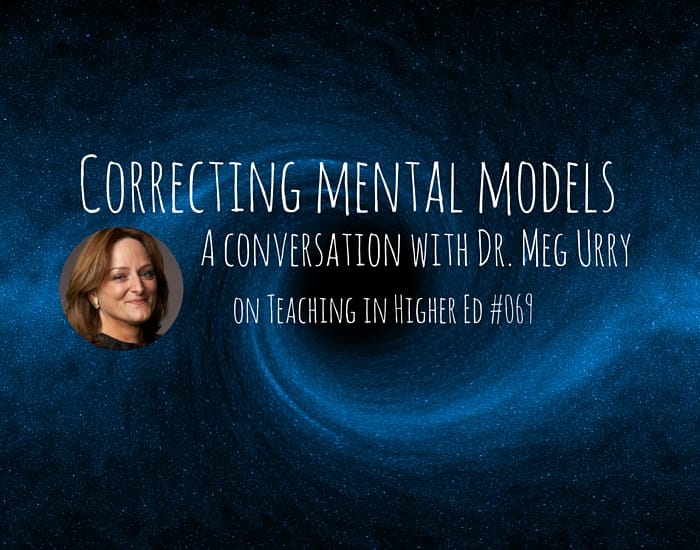
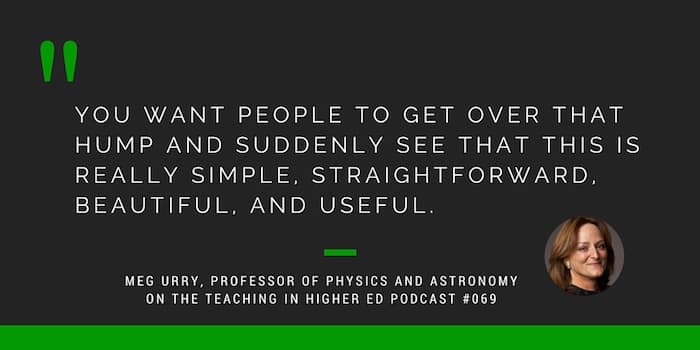
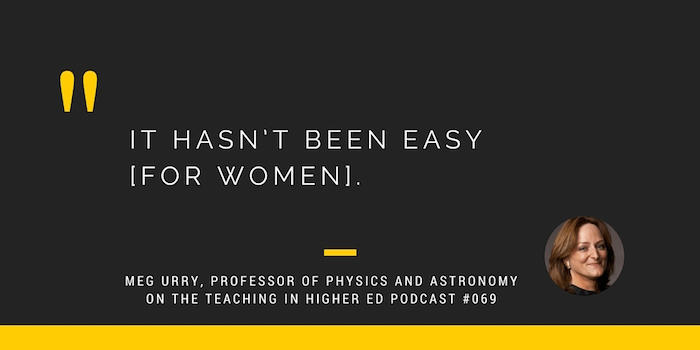
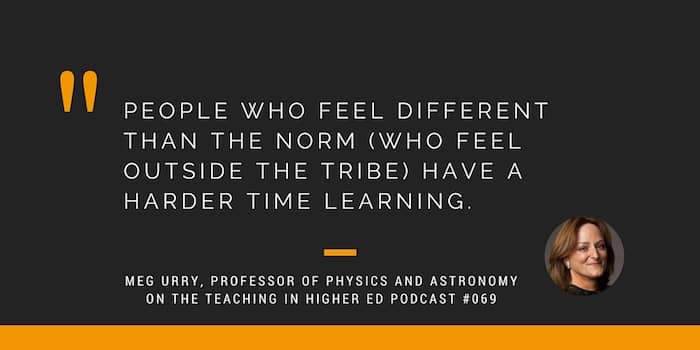
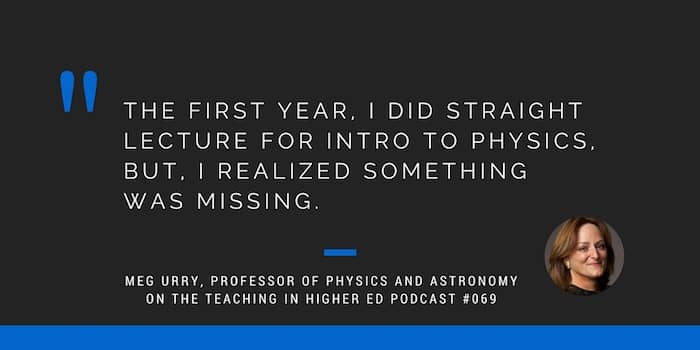
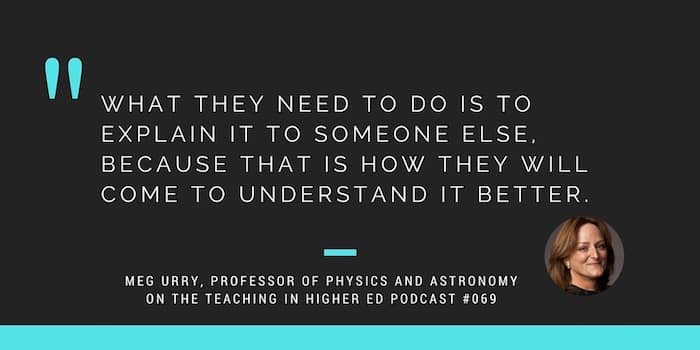


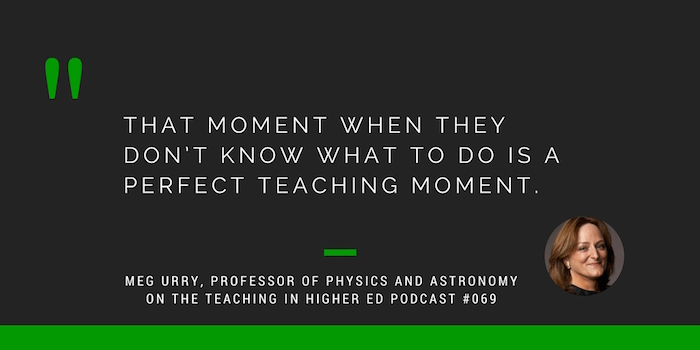




It’s helpful to also learn the gender bias like a case study. It created good impact to raise the awareness of gender bias. Thank you for sharing.